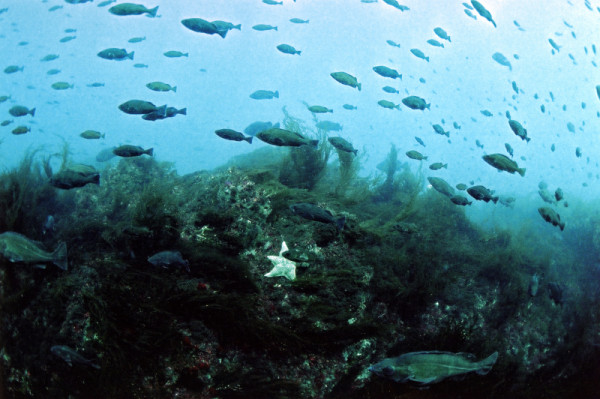Canada, Ocean Nation, Needs More Marine Protected Areas
With three coasts, the longest coastline of the world, and vast, rich ocean spaces under our control, where does Canada sit on the world’s ranking of marine protected areas (MPAs)?
First? Tenth? Nope, we rank 100 out of the 172 nations according to the Protected Planet Report 2012. We’re slipping behind many other countries around the world. Our friends at the Living Oceans Society calculated that Canada has fallen from 66th place (of the 172 signatories to the Convention on Biological Diversity with coastlines) with only 0.63 percent of our territorial waters protected in 1990, to 100th place with the nominal increase to 1.25 percent in 2010.
Most countries lag far behind in MPAs compared to parks on land. You know the situation is dire when National Geographic asks if it’s too late to save our oceans.
Bowie Seamount, off the coast of British Columbia, Canada, is one of the most biologically rich seamounts in the northeast Pacific. It was designated a Marine Protected Area (MPA) on 21 April 2008.
Only 1.25% of our ocean area is protected. That’s a long way from the target set by the global community a few years ago: to conserve 10% of the world’s marine areas to be effectively and equitably protected and managed by 2020. For some inspiration, look at how Australia is doing with MPAs.
We need to protect ocean spaces in the same way we protect wilderness lands- to prevent rampant species loss, to maintain our biodiversity heritage, to ensure our climate is regulated, and maintain fully functioning ecosystems. These are irreplaceable benefits.
MPAs also have economic value. Tourism is one example. MPAs can protect whale habitats -whale watching has a value of close to $2 billion a year according to a 2010 study.
MPAs can protect the economic value of fisheries too. Rebuilding fisheries is sorely needed: over 85 per cent of the world’s fish stocks are fished up to or beyond their limits. Even with better than average fishing practices here at home, our fish catches are declining. Last fall’s report from the Commissioner of the Environment and Sustainable Development found: in 2009 the quantity of Canada’s fishery catches was 41 percent less than the peak harvest volumes of the late 1980s; the 2009 landed values were among the lowest on record since 1984.
But the fishing sector can be skeptical of these benefits, and often opposes the creation of new MPAs as they don’t see how they can benefit.
Fortunately studies show that MPAs can help restore fisheries. An influential group of authors published a business model for MPAs which makes a convincing case “to show that the value of marine reserves (enhanced adjacent fishing + tourism) may often exceed the pre-reserve value, and that economic benefits can offset the costs in as little as five years.”
The title of another new study published in the journal Nature Communication a few weeks ago says it all: “ Marine protected areas improves yield without disadvantaging fishers”. This study looked at an MPA in South Africa which has been in place for over 15 years and found that the total catch of roman (an endemic seabream) started to increase one year after the MPA was implemented, and that there was no evidence that the establishment of the MPA caused a drop in total catch or increased travel distances for fleet or fisherman. The study provides “rare empirical evidence of rapidly increasing catch rates after MPA implementation without measurable disadvantages for fishers.”
We’ve been working on establishing a full network of MPAs in BC for many years and are coming closer to this goal. The Marine Planning Partnership’s subregional plans and the BC-Canada Bioregional MPA strategy are both steaming ahead, and we’re among the many groups working to protect globally unique seamounts and glass sponge reefs, far roaming seabirds, recovering whale populations, kelp forests, eelgrass ‘meadows of the sea’, and other rare and endangered species and habitats.
Let’s get moving on MPAs. 1% is not enough.


